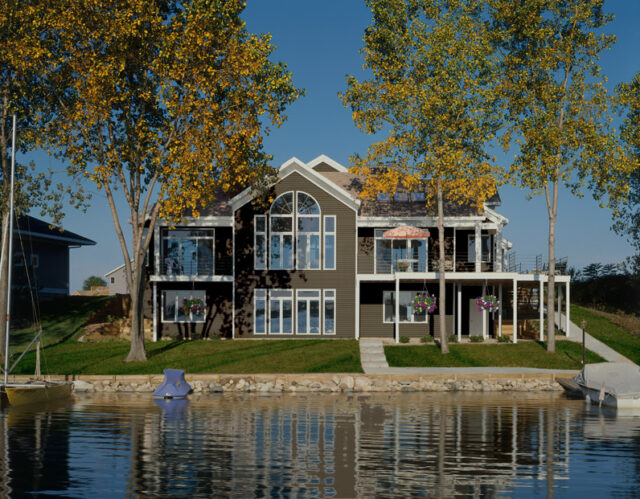Permits and Regulations for Exterior Renovations: What Homeowners Need to Know
When planning an exterior renovation for your home, it’s easy to get caught up in the excitement of choosing new siding, windows, or even landscaping features. However, before you start any work, it’s crucial to understand the permits and regulations that govern these types of projects. Navigating local building codes and obtaining the necessary permits can be a long road, but it’s an essential step in ensuring that your renovation is legal, safe, and up to code. In this blog, we’ll cover everything homeowners need to know about permits and regulations for exterior renovations.

Understanding the Importance of Permits
Permits are official approvals issued by local government agencies that allow you to proceed with construction or renovation projects. They are designed to ensure that all work complies with local building codes, zoning laws, and other regulations that protect public health and safety.
Failing to obtain the necessary permits can lead to significant consequences, including fines, legal issues, and even the need to undo completed work. Additionally, unpermitted work can cause problems when selling your home, as potential buyers may be wary of purchasing a property with non-compliant renovations.
Common Exterior Renovations That Require Permits
Not all exterior renovations require permits, but many do. Here are some common projects that typically need permits:
- Roof Replacement: If you’re replacing your roof, especially if it involves structural changes, you will need a permit. This ensures that the new roof meets local building codes and can withstand the weather conditions in your area.
- Siding Installation: Installing or replacing siding requires a permit. This is particularly true if the project involves changing the structure or insulation of the exterior walls.
- Window and Door Replacement: While replacing windows and doors may seem like a straightforward task, it often requires a permit, especially if you’re altering the size of the openings or making structural changes.
- Deck Construction: Building a new deck or significantly altering an existing one always requires a permit. This is because decks must meet specific safety standards to prevent accidents.
- Fencing: Erecting a new fence or altering an existing one may require a permit, particularly if it exceeds a certain height or is close to a property line.
- Additions and Extensions: Any addition to your home, such as a new room or garage, will require a permit. This is true even if the addition is relatively small, like a porch or sunroom.
- Exterior Painting: In some areas, particularly in historic districts, even exterior painting may require a permit to ensure that color choices and materials are in keeping with the neighborhood’s character.
- Landscaping and Hardscaping: Major landscaping projects that involve altering the terrain, installing retaining walls, or adding large structures like pergolas or outdoor kitchens often require permits.
Steps to Obtaining a Permit
The process for obtaining a permit varies depending on your location and the scope of your project, but the following steps are generally involved:
- Research Local Regulations: Start by researching the specific regulations in your area. This may involve visiting your local building department’s website or contacting them directly to inquire about the necessary permits for your project.
- Prepare Your Plans: You’ll need to submit detailed plans of your proposed renovation when applying for a permit. These plans should include dimensions, materials, and any structural changes. You may need to hire an architect or contractor to help prepare these documents.
- Submit Your Application: Once your plans are ready, you’ll need to submit a permit application to your local building department. This typically involves filling out forms, providing the necessary documentation, and paying a fee.
- Wait for Approval: After submitting your application, the building department will review your plans to ensure they comply with local codes and regulations. This process can take anywhere from a few days to several weeks, depending on the complexity of your project. In Rhode Island, your property taxes must be current.
- Schedule Inspections: Once your permit is approved, you’ll need to schedule inspections at various stages of your project. Inspections ensure that the work is being carried out according to the approved plans and complies with all relevant codes.
- Final Inspection and Approval: After your project is complete, a final inspection will be conducted to ensure everything is up to code. If the inspector is satisfied, your permit will be closed, and your renovation will be officially approved.

Understanding Zoning Regulations
In addition to building permits, you must also be aware of zoning regulations. Zoning laws dictate how land can be used in different areas of a city or town. They control the type of buildings allowed, their height, the distance from property lines, and even the types of materials that can be used.
Zoning regulations can impact your exterior renovation in several ways:
- Setbacks: These are the minimum distances that a building or structure must be set back from property lines, streets, or other buildings. For example, if you’re building a deck or adding a new room, zoning laws may dictate how far it must be from your neighbor’s property.
- Height Restrictions: Some areas have height restrictions that limit how tall a building or structure can be. This is important to consider if you’re adding a second story or constructing a tall fence.
- Lot Coverage: Zoning laws often limit the percentage of your property that can be covered by buildings or structures. This is important if you’re planning a large addition or extensive hardscaping.
- Historic Districts: If your home is in a historic district, there may be additional regulations governing exterior renovations. These regulations are designed to preserve the historic character of the neighborhood and may restrict the types of materials, colors, and designs you can use.
Working with Contractors and Professionals
Navigating permits and regulations can be complex, especially if you’re not familiar with the process. Hiring a licensed contractor like Seaberg Construction who understands local building codes can make the process much smoother. We submit your permit application, schedule inspections if needed, and ensure that your project complies with all regulations.
Consequences of Non-Compliance

Failing to obtain the necessary permits or violating zoning regulations can have serious consequences. Here are some potential issues you may face:
- Fines and Penalties: Most municipalities impose fines for unpermitted work. The amount can vary, but it’s often substantial enough to make obtaining a permit worthwhile from the start.
- Legal Action: In some cases, the local government may take legal action against homeowners who violate building codes or zoning laws. This could result in a court order to undo the work or bring it up to code.
- Resale Issues: Unpermitted work can complicate the sale of your home. Potential buyers may be hesitant to purchase a property with non-compliant renovations, and you may be required to disclose any unpermitted work.
- Safety Risks: Permits and regulations are in place to ensure the safety and structural integrity of buildings. Skipping the permit process could result in unsafe construction, putting you and your family at risk.
Conclusion
Permits and regulations may seem like a hassle, but they are essential for ensuring that your exterior renovation is safe, legal, and up to code. By understanding the requirements in your area and working with professionals, you can navigate the process smoothly and avoid potential pitfalls. Whether you’re planning a simple landscaping project or a major home addition, taking the time to secure the necessary permits will give you peace of mind and protect your investment.
To obtain your complimentary roofing, vinyl siding, windows, doors and deck estimate from Seaberg Construction, please complete the form available on our website: https://seabergconstruction.com/about-us-roofing-company/contact-us/
Read Seaberg Construction’s Google reviews left by homeowners like yourself: https://tinyurl.com/kkxwhx8k
Follow us on Facebook: www.facebook.com/seabergconstruction and Instagram: www.instagram.com/seabergconstruction to stay up-to-date with our current projects and news.
To obtain your complimentary estimate from Seaberg Construction, please complete the form available on our website: https://seabergconstruction.com/about-us-roofing-company/contact-us/
And, don’t forget to read our other blog posts for more home improvement tips and ideas: http://seabergconstruction.com/home-owners-information-center/


